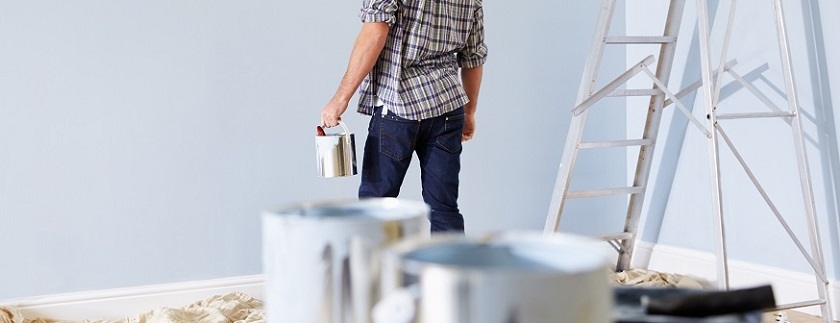Think Finding The Right Paint Colour Is Difficult? Wait Until You Look At The Brushes…
When you start preparing to paint a room you’d be forgiven for thinking that the difficult choice is in which colour to go for. In fact, choosing the right tool for the job may completely change the finish and quality of your job. We give you ‘trade secrets’ from a painter-decorator to help you know when to use which type of brush, which materials to use with each paint type, and which spec to choose to give you a professional finish.
Matching brush to paint type
"The first step is to match the paint brush to the paint you’re using. For water based paints use synthetic bristles which are longer-lasting. For oil based paints the paint is thicker so use natural, non-synthetic brushes as it has better ‘pick-up’ the paint flows off the brush easier.
The size of the surface area will determine the type and size of brush to use. For a larger surface area use a brush head between 3-4 inches (100mm). For intricate work such as window frame painting use a sash brush which is smaller and pointy – it can get into the corners nicely. It also works well on skirting boards and doorframes, so you get a cleaner finish in the corners.
Quality vs price
Price is directly proportional to quality when it comes to paint brushes. Cheap brushes won’t last you as long and won’t give you as good a finish whereas a mid-range priced brush will last a lot longer – you’d be able to do a few rooms with the same brush (assuming that you look after your brushes properly).
Quality is visible in all aspects of a brush, from the handle which may be plastic, wooden or rubber molded, to the size, material and finish of the ferrule (metal band that holds the bristles) – a good quality ferrule won’t rust. The bristles will also vary greatly. Under a microscope you’d be able to see a distinct difference, a finer bristle will have a pointed, tapered finish compared to a blunt end. The results will be visible in the drag lines on the wall, with a finer bristle giving you a much cleaner finish.
Rollers vs brushes
Choose a mini roller for confined and hard to reach places such as behind the radiator. Slide the sleeve on a long and thin handle and it’s easy to get down into the space without having to take it off the wall.
Use a spongier roller head for gloss paints and synthetic woven heads for water-based paints. Woollen heads will give you a better finish especially if you’ve gone for a higher spec of paint.
To know which pile length to go for depends on the quality of the wall surface you’re painting. If you have a very smooth wall with no imperfections, choose a short pile. With a rough surface such as an outdoor pebble-dashed wall use a long-piled roller head – that will help you get into all the pockets of the uneven surface.
For a standard, clean surface wall in a residential house you’re probably best off starting with a 9-inch (225mm) roller and go for a short to medium pile, this will give you the great professional finish that you’re looking for.”



